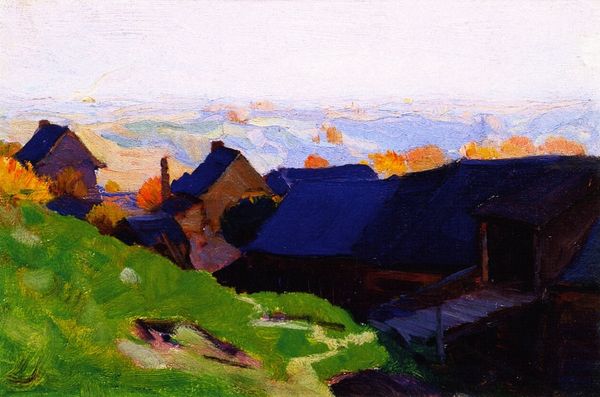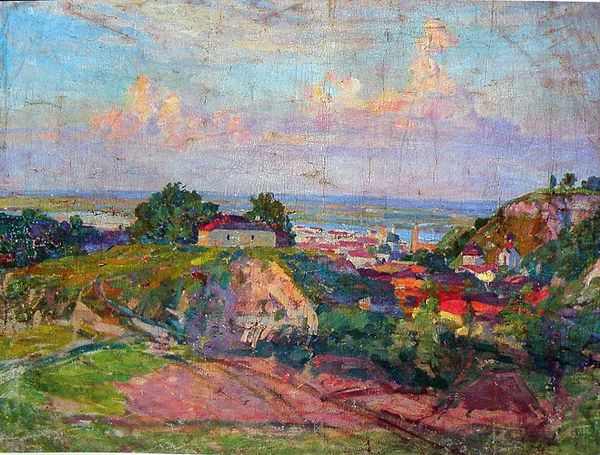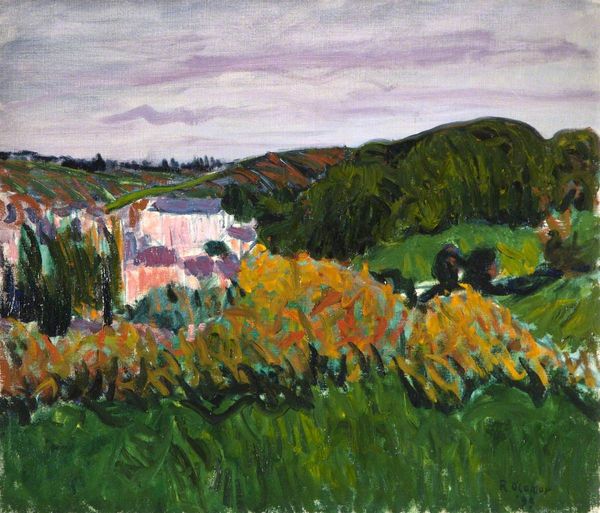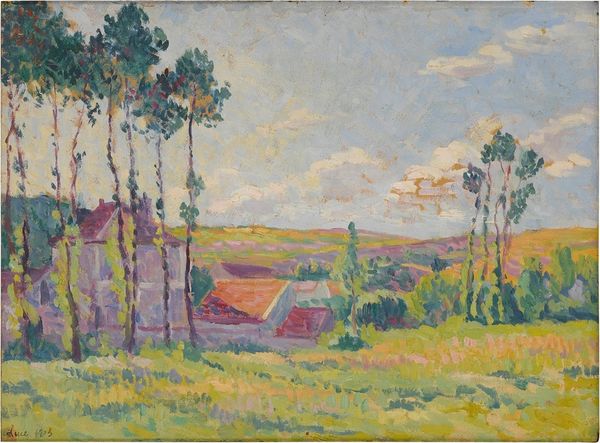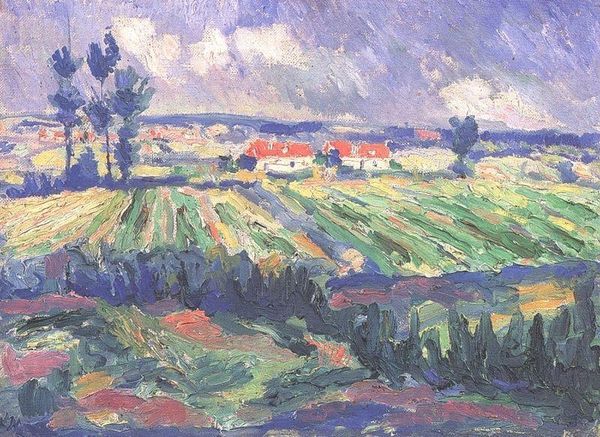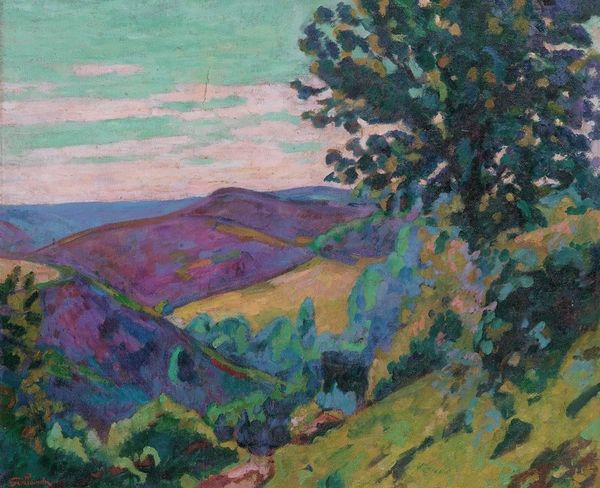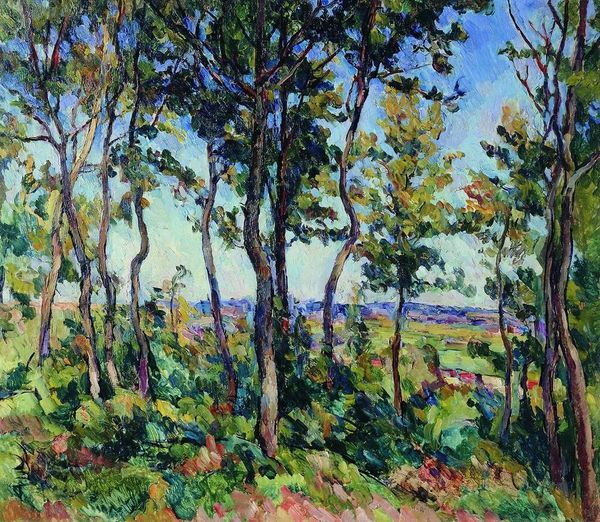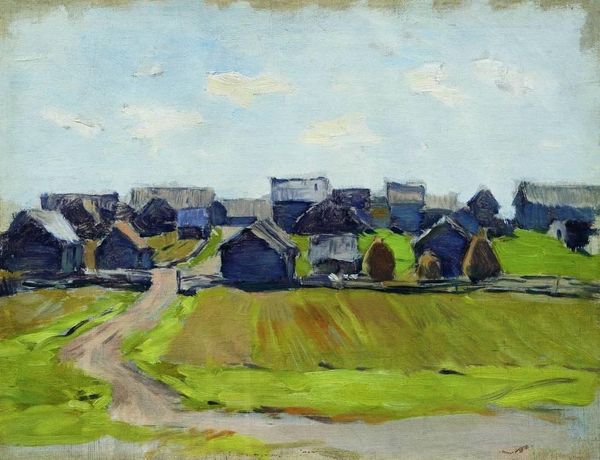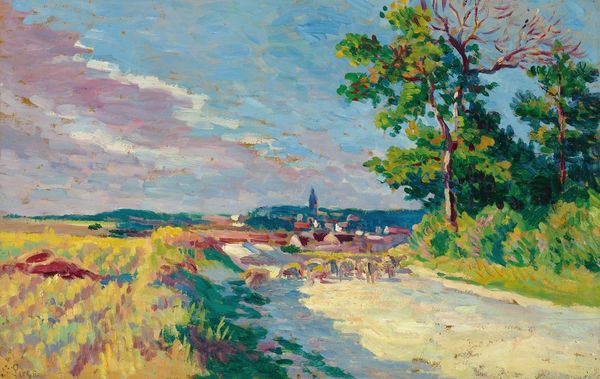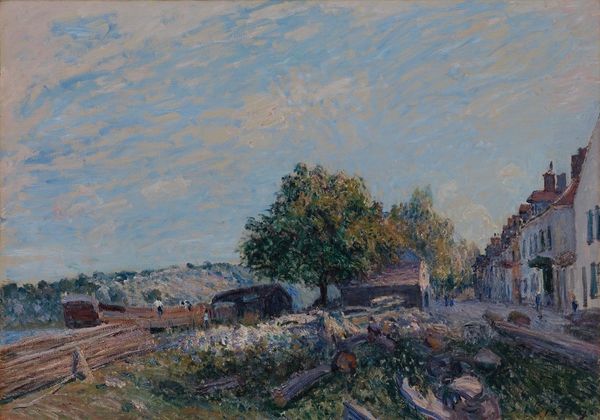
Copyright: Public domain
Editor: We are looking at Roderic O'Conor's "Pont-Aven," an oil painting from 1895. It has such a fragmented surface, broken up into a multitude of distinct brushstrokes. How do you interpret this work? Curator: I see it as O’Conor grappling with representing community through a Post-Impressionistic lens. Think about Pont-Aven as an artist's colony, a place of radical experimentation in the late 19th century. What is O’Conor attempting to express about the relationship between the individual artist and the collective? How does the broken brushstroke embody this tension? Editor: So, the visible brushstrokes aren't just a stylistic choice; they represent something deeper? Curator: Exactly. The thick impasto and broken color can be read as a fracturing of traditional artistic approaches. But let's also think about the context: artists seeking refuge from rigid academic systems. The act of painting in this way becomes a visual assertion of artistic independence and the embrace of a more subjective experience. How does it speak to the wider social and political context of its time? Editor: That makes sense! It seems like O'Conor uses the landscape not just as a subject, but as a canvas to explore the changing role of the artist in society. The vibrant colors—the blues and greens against the red roofs—they’re like a cry for individuality within community. Curator: Precisely. And the choice of Pont-Aven itself is crucial. It wasn't just a picturesque location. It was a hotbed of artistic rebellion, so it is clear how this artistic identity takes a place in society. O’Conor is using the location to signify a very intentional break from tradition and embrace modernism. Editor: I never thought of it that way before. Now I see this landscape as more than just a scene, it's a statement. Curator: It is. That's the power of understanding art within its socio-historical context.
Comments
No comments
Be the first to comment and join the conversation on the ultimate creative platform.
